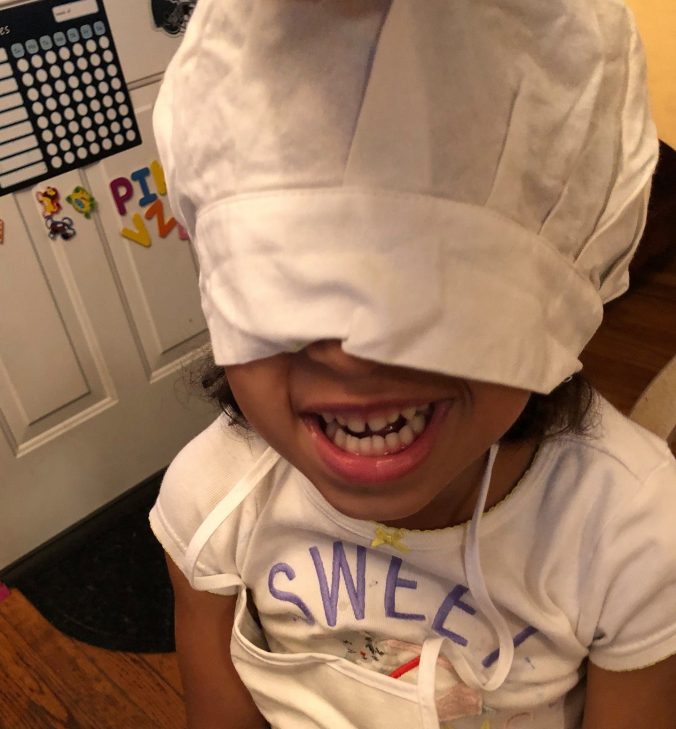There are lots of reasons a child may need extra help at school. Some have school-based needs from the first day. A teacher may raise concerns about learning or behavior. A student could have a new diagnosis that interferes with daily activities. No matter the reason, there are basics that can help families start on this journey.
School-based services can be complicated and ever-changing. As a pediatrician, I still sometimes struggled with getting kids what they needed in school. Having a plan and understanding some of the terms can give families a little more confidence.
Where to start?
How the process begins will differ depending on each family and child. For some children, their needs are known before they even start school. Other students’ needs may not be known until they struggle. In any case, the first place to start is information gathering and presenting. Get as much information as you can and put it all in one place.
Talk to your doctor
The doctor’s office is one good place to start. For many school services, children need a diagnosis to qualify. If your child does not yet have a documented diagnosis, the doctor can help with that. Sometimes the doctor can make a diagnosis that day. Often, they will have questions for you and/or your child’s teacher or specialists. And they may decide to make a referral. To save time, bring any info you have to the visit- report cards, prior testing or school evaluations, teacher’s notes, names of specialists, etc.
If your child already has a diagnosis or known reason for needing services, the doctor can help with information gathering. They can give you a list of diagnoses, prior test results, medications, durable medical equipment and even ideas for services that may be helpful. As a doctor, I would put all of this info in a letter that the parents could bring to the school. This was easier for the parent and school than sifting through years of paperwork.
Talk to the teachers
Many parents start with talking to the teacher. At the beginning of the year, ask the teacher the best way to reach them: email? phone? a note in your child’s folder? Don’t wait for parent-teacher conferences. Teachers can let you know how your child is learning. They can also tell you what has worked or hasn’t worked so you know what to ask for. And they notice parts of your child’s day-to-day that other people might miss. Is your child unsteady in a crowded hallway? Are they squinting at the board? Teachers want the same thing you do- to see your child succeed in class.
Talk to the school
Okay, you’ve talked to your child’s doctor. Maybe you’ve talked to the teacher. You’ve decided your child needs support at school. The next step is to go to the school or district. Your child’s teacher, school counselor, nurse or principal may be able to help you depending on what your child needs.
Don’t hesitate to contact the school district, especially if this is a long-term issue that will span grades. Every district has a Department for Special Education. Many also have a department for “student services” or “student support.” You can find these on your school district’s website, or your school’s counseling office can give you the phone number.
Be Specific
When you talk to the school district, be very specific. Tell them what problems your child is having in school (or what problems they would have without support). This could include getting around the school, hearing/seeing the teacher, learning, staying safe and healthy in school, etc. The school district is interested in how your child does in a school setting. If your child has a specific diagnosis or has results of testing or studies, let them know. It may help to provide the district with any letters or information you have from the doctor, teachers, prior schools, testing, etc. Remember to keep a copy for yourself!
I almost always recommend writing a dated letter to the school district with your concerns and needs. Keep a copy of the letter for yourself. If you talk to the district on the phone, ask them what the next step is and take notes of who you talked with and when.
If there is something specific that your child needs, let the school district know 1) What school-based problem needs solving- e.g. “My child will not be able to carry their books around school or take the stairs” 2) Why (if you know why)- “They have cerebral palsy which causes poor balance” and 3) The solution- “They need an elevator pass, longer time between classes and someone to carry their backpack.” The people at the school district want your child to do well in school. However, they are not doctors so something that may be obvious to you may need to be stated clearly.
If you don’t know what your child needs, it is still important to be specific. E.g. “My child is in 3rd grade and reads below a 1st grade level. When the teacher asks a question, my child knows the answer but doesn’t understand when it is written down. This started in first grade. My doctor did a vision test and it was normal.”
School evaluations
If your child does not have a diagnosis, sometimes a school evaluation can be helpful. You can ask the school for an evaluation as part of the IEP process (see below for more information about IEPs). An evaluation is usually done at the school by an outside expert. It can include observations, teacher and parent questionnaires and tests that your child completes. These tests may look at how your child learns, how your child speaks or moves, and your child’s social/emotional development. The school cannot usually make a diagnosis. However, the results may help your doctor make one. They can guide the school to which services your child needs.
Your child can be evaluated by the school even if they are also being evaluated by a specialist or their own doctor. Sometimes the school testing provides a different kind of information.
The meeting
Some services can be provided very easily. Often, just talking to a teacher, counselor or nurse can get a child the help or support they need.
However, sometimes the school and family will need to sit down together to make a clear plan for support moving forward. Parents may hear about different types of plans for their child including an IEP (Individualized Education Plan) or 504 Plan. The following sites explain 504 Plans and IEPs and how they are similar and different.
IEP vs 504 at Understood.org
What is an IEP? at Additude Magazine
504 Plans at Kidshealth.org
No matter what type of plan your child has, there are a few things to know before the meeting:
- You can make changes to what the school suggests. The first meeting is the easiest time to ask for what your child needs and tell the school what changes you want. However, you can also revisit the plan later if it isn’t working.
- Don’t be afraid to be creative. You may have ideas that the school hasn’t thought of. There is no real limit on what can be in the plan if you and the school agree.
- If you don’t understand something, ASK. There are a lot of new words, acronyms and abbreviations. Parents are not expected to understand all of it.
- Remember to bring copies of everything even if you’ve already given it to the school.
My best advice for the meeting itself is: bring someone with you. As someone who has been through a meeting, I know how much it can feel like you are in a different country where everyone is speaking a language you don’t know. Many school districts allow you to request a parent peer who has been through this before. They know the acronyms and how the system works. If not, bring a friend. Some doctor’s offices have care coordinators or social workers who can attend with you.
Through this process, you will deal with experts in medicine and experts in education. Remember, you are the expert in your child!


